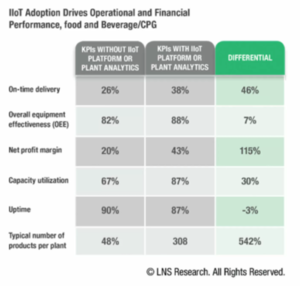Data visibility helps manufacturers improve efficiency and reduce costs. When data is collected, organized, and analyzed, it provides knowledge on how to improve workflow.
Manufacturers need access to accurate information about their products at all times for efficient production planning and scheduling. This data promotes quality control processes like design reviews before new product launches.
With data visibility, manufacturers can see what’s going on in an organization. It provides transparency throughout the data life cycle from creation through use until retention or deletion.
Companies are gaining better insights into how they work internally by automating the data collection process. Here’s what you need to know about how data visibility helps manufacturing efficiency for better products and profits.
What is Data Visibility in Manufacturing?
How data visibility help manufacturing efficiency in real-time enables you to see critical insights and how processes, people, and products function. It helps companies improve efficiency, safety, service, compliance, and downtime prevention.
Data visibility affects every role in the value chain by sharing that information to other departments for an actionable connection. By enabling your team to make decisions based on real-time data, you can increase the safety of procedures in both factory and field. This will also lead to a decrease in machine failure and predictive maintenance since they’ll be able to see any potential problems before it occurs.
Yet, acquiring information itself isn’t enough. Now that the data is collected and visible, analysis is necessary.
A Case for Using Data Analytics in Manufacturing
Data analysis helps you predict the outcome and identify patterns. Whether you are looking at processes on a shop floor or in the performance of machines, it can help identify and create new ways to improve efficiency.
The market is seeing a shift in smart machines and software-based systems that generate extensive amounts of data, also known as big data. The productive uses of big data include:
- Examining power consumption: This can help shop owners and managers determine if they need to change the production process.
- Analyze the life of machinery and tools: By tracking the lifecycle of the equipment, you can determine quickly which will need repairs and the maintenance schedule for every machine and tool.
- Determine overall equipment effectiveness: Data visibility and analysis allows you to see the equipment in its entirety, right down to how much that machine is either costing and/or profiting the company.
Big data technologies help provide better data visibility, which improves the data analysis process. Visibility and analysis working together support the decision-making process to create more informed conclusions.
6 Ways Data Visibility Helps Manufacturing Efficiency
Harnessing the data behind your manufacturing processes can improve productivity and boost profits. Around 77% of industrial manufacturers are creating big data strategies and implementing big data projects. With data visibility, you can:
1. Allow Data Sharing
Unwritten information unknown by others within a company means critical knowledge is not passed on to less-experienced workers. Without data sharing on an automated platform, company secrets can be lost if an experienced employee retires or leaves the company.
The best way to eliminate this risk of knowledge sharing deficiency is by providing data visibility for analysis and training of new staff. This kills any variables in the manufacturing process.
2. Mitigate Risks of Tool Failure
Big data is a powerful tool that manufacturers can use to plan for the future. One way they do this is by using big data analysis of equipment wear and past failures.
By knowing what’s happening in each step of the process, you can ensure that everything goes smoothly. You can do this by tracking:
- Downtime
- Uptime
- Production goals
- Defects
- Cycle Time
- Equipment efficiency
This allows for better performance in the long run while avoiding waste that typically comes from equipment breakdowns or malfunctions.
3. Reduce Unplanned Downtime
Manufacturers can use data to predict how long their machines will last before needing maintenance. The use of big data in predictive maintenance reduces costs, extends equipment lifetime, and improves uptime.
It also allows manufacturers to create a recovery plan if an unanticipated failure occurs. More than 40% of organizations use data visibility to identify these issues beforehand.
4. Monitor Data in Real Time
Every organization relies on real-time data visibility into product information to perform all its functions. It’s a crucial aspect that touches every part of the business, from R&D and marketing down to production and sales.
For your business strategy and tactics to be truly effective in today’s world of analytics, you need more than just access – you must have the ability to see accurate facts as they occur. This insight allows you to accurately predict future outcomes based on historical trends. This includes (but is not limited to):
- Monthly performance
- Best-selling products
- Product quality
- Overall production
- Sales
- R&D results
- Marketing efficiency
5. Improve Operations
The last thing businesses want is a scenario where internal siloes create gaps within critical information throughout the organization. By enhancing data accuracy, you empower employees to overcome roadblocks from miscommunication between departments and improve operations.
Connecting machines with IoT-based sensors can help manufacturers understand how to use tools, identifying issues quickly and efficiently before they escalate into bigger problems.
6. Optimizing Supply Chain Processes
Automate supply chain management to reduce human error and boost demand fulfillment. This data visibility enables constantly managing the supply chain to meet promised deadlines by monitoring orders.
Organizations often store their products in distribution centers and warehouses, and on shelves of retail stores or backrooms. Inventory visibility allows organizations to reconcile current inventory levels with expected demand to better fulfill customer needs to achieve clarity about inventory availability.
Rainmaker Can Help Manufacturing Companies Use Data Visibility More Efficiently
At Rainmaker, we focus on addressing the critical pain some manufacturing companies experience. Our comprehensive suite of solutions, services, and expertise can help you transform your manufacturing facility.
By aligning better processes through more reliable on-time delivery, we can help manufacturers envision a future where intelligence from their ERP powers their sales engine for optimized profits.
Are you ready to let big data improve the efficiency of your manufacturing facility? Contact us today to see how we can help you automate your processes for better data visibility.








